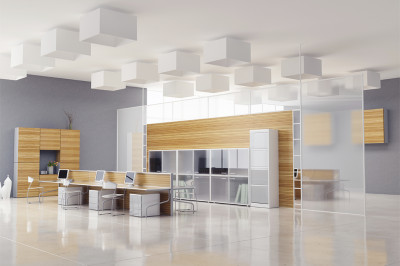Medical office space users and physician practices don’t typically relocate to new buildings as often as general office tenants. However, the competition for new patients is increasingly steering physician practices to non-hospital campus properties as they seek more conveniently accessible locations for their patient base.
This trend is evident in the increased development of smaller suburban medical office projects and urgent care clinics you see in any significant metropolitan community. Furthermore, it is increasingly common to see health care providers take space in smaller community retail centers near hospital campuses.
Medical users also tend to sign office space leases with longer terms than your typical office tenant, which puts them in the marketplace for office space less often. While many of the same sound principles required to lease general office space apply to health care, there are many nuances and issues that are unique to medical users that should be considered.
One of the first decisions medical users should make is to retain a broker with experience in leasing medical office space. Hiring a tenant representative is prudent for any tenant. However, brokers who have experience in leasing medical office space can be particularly helpful because they may be aware of available buildings and space that have not come to the attention of the practice. These brokers also understand how to structure terms and covenants of the lease agreement to fit the unique needs of the healthcare provider.

Some of the key issues for medical office space users include:
Use issues: Medical tenants use hazardous materials and generate biomedical waste. Medical tenants can use X-ray machines, CT scans and other machines that may generate harmful radiation. As a result, special requirements need to be accounted for in the lease document to ensure compliance.
After-hours access and utilities: Medical tenants often may see patients after normal building hours and, in the case of urgent care clinics, operate on a 24-hour basis. Paying special attention to how the utilities are accounted for after normal building hours can save unnecessary utility expenses.
Compliance with Americans With Disabilities Act (ADA): Patients are more likely to have special access needs than the general public. Buildings containing health care providers are more likely to receive ADA scrutiny. As a practical matter, medical tenants need to pay special attention to the ADA clause contained in the lease document.
Landlord inspection and privacy: Generally, commercial leases provide the landlord the right to reenter your space to show the premises to future tenants, inspect for compliance with the lease and allow access to make infrastructure repairs in the lease premises and elsewhere in the building. Yet, health care providers need to limit the landlord’s access to examining rooms and other areas during certain hours of the day as well as deny access to patient records.
Anti-kickback issues: Safe harbors created under the Federal anti-kickback laws create special requirements for leases between medical tenants and properties that are hospital or physician-owned. Proper compliance and documentation must be addressed if the landlord-tenant relationship exists.
Exclusivity provisions: An exclusive-use provision is a lease term where the landlord promises not to lease any other space in the development to a party whose intended use would be in direct competition with tenant’s use of its space. In medical office buildings, it can be prudent to get exclusivity for your specific specialty practice.
Death and disability clauses: Solo practitioners should explore getting a death and disability clause in the lease providing for the ability to cancel the lease (typically with penalty) in the event the physician is unable to practice due to death or disability. Landlords will resist, arguing that the tenant’s insurance should provide for this. But in some cases, this provision can be successfully negotiated into lease agreements.
Tenant improvements: The cost of build-out for the typical medical user often greatly exceeds that of a general office tenant. In today’s market, even a modest office design can run $40 to $60 per square foot. The extensive plumbing, millwork and equipment compliance issue creates additional cost as well as specific lease and transaction issues. These include:
- Term: As a result of the typically higher tenant finish-out costs, it is common for medical office leases to be 7 to 10 years in term as opposed to 3 to 5 years for general office tenants. The longer term should result in a larger tenant improvement allowance for the landlord.
- Architect and contractor: Landlords generally like to have tenants’ finish work done by contractors and, in some cases, design professionals with whom the landlord has a prior relationship in order to maintain control of the process. However, it is critical for the tenant to obtain the right to use his contractor and design and construction professionals who are experienced and qualified in medical design and build-out. That way, he can maintain some control in the management of the design and construction process.
- Relocation provision: It is common for office leases to contain provisions requiring the tenant to consent to a substitute premises should the landlord decide that it is in the landlord’s best interest to move the tenant from one suite in the building to another. Because of specialized build-out needs, medical tenants should resist these provisions.
- Liens: As a result of the cost of medical leasehold improvements, physician practices often finance leasehold improvement costs above the landlord allowance as well as medical equipment purchases. Lien rights provided to the landlord should be subordinate to the tenant’s lenders for medical equipment purchases.
- Restoration of premises: Virtually all office space and retail leases contain provisions addressing the landlord’s and tenant’s rights and responsibilities regarding restoration obligations at the end of the lease. These provisions need to dovetail with the special situation of a medical tenant.
For the medical office space user, real estate is a significant multiyear financial commitment. A knowledgeable real estate advisor and careful planning can ensure the right location and a well-structured transaction and lease agreement to fit the unique needs of the healthcare provider.
Coy Davidson is Senior Vice President of Colliers International in Houston. He publishes The Tenant Advisor blog.

 Coy Davidson
Coy Davidson

 Colliers Insights Team
Colliers Insights Team
 Ron Zappile
Ron Zappile